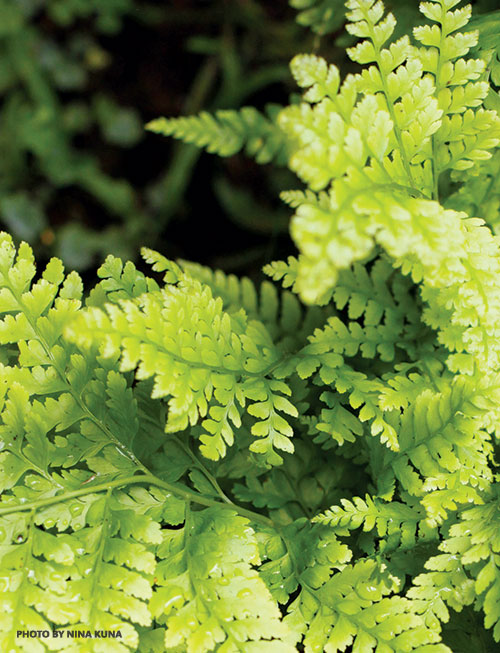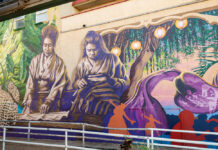
University of Hawai‘i grad student Julie U‘ilani Au has spent years scouring the Hawaiian-language newspaper archive, which dates back more than a century and serves as a repository of indigenous wisdom. She says that fern lore can be found in old articles, advertisements, and traditional tales. “Certain mo‘olelo that were originally published in the newspapers, like Hi‘iakaikapoliopele, feature gods who had plant bodies or manifestations.” She cites the goddess Pā‘ūopala‘ā, who accompanies Pele’s sister Hi‘iaka on an epic journey to retrieve a wayward lover. Sometimes Pā‘ūopala‘ā is a human companion, other times she manifests as a magical skirt made of pala‘ā ferns—thus her name, pā‘ū (skirt) of pala‘ā.
Pala‘ā is a fractal-like burst of light green, with multiple lobes that shimmy in the breeze. Hawaiian ferns run the gamut from tiny, ephemeral species to magnificent trees with thirty-five-foot-tall canopies. The diminutive ‘ihi‘ihilauākea is a wee, clover-shaped fern that appears only after a drenching rain—and just in two places: Koko Head Crater on O‘ahu and Mokio Preserve on Moloka‘i. On the opposite end of the spectrum, towering hāpu‘u tree ferns grow throughout the archipelago, shading the forest floor with twelve-foot-long fronds. The base of these ferns and their tight-fisted fiddleheads are covered in silky golden fibers called pulu. In days past, Hawaiians used tufts of pulu to dress and embalm the dead. They stuffed it into mattresses and pillows, even exporting it to California in the mid-1800s for this purpose.






so happy to see your article, mahalo